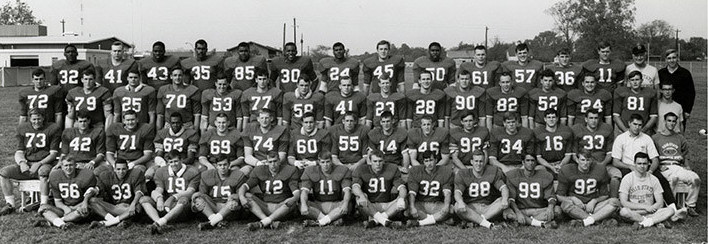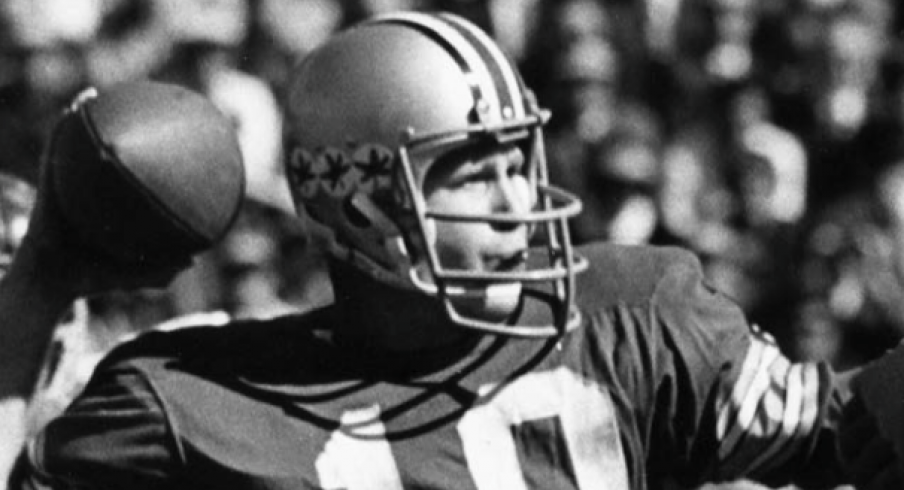Imagine a time before the Internet. Before recruiting rankings or 'star' designations. Now try to imagine finding the right prospects for your team in a time like that.
That is exactly what the recruiting world was like in the 1960s, when Woody Hayes consistently fielded one of the best teams in the country at Ohio State. He did it by primarily keeping the best players in the state of Ohio home and bringing them to Columbus, where he built the Buckeye program into the juggernaut it has become.
With all the teams that Hayes put together, and all the teams that have come since in Columbus, there might not be a better recruiting class than the 1967 group that walked into Ohio Stadium.
That group, while featuring a number of Ohio natives, also saw the Buckeyes go regional, bringing in the likes of Jack Tatum from New Jersey, John Brockington from Brooklyn, N.Y. and Jan White from Pennsylvania.

One of the pillars of that 1967 recruiting class, of course, was quarterback Rex Kern, who told Eleven Warriors that the minute he committed to Ohio State, Hayes had him recruiting other players that would end up in his class.
"I announced that I was going to Ohio State to play basketball and football and when we made the announcement, Woody gave me a list of guys to start calling," Kern said. "One of the guys was a friend and great teammate Larry Zelina from St. Benedictine (Cleveland, Ohio). Woody said, 'If we get this kid, we're probably going to have the greatest recruiting class we've ever had.' We (already) had guys coming in like Jack Tatum, Bruce Jankowski, Jan White, John Brockington and Tim Anderson. We had a great football recruiting class."
Once the 1967 football season started, it was clear that Hayes knew exactly what he was talking about.
The varsity season didn't start out like many had hoped in Columbus, as the Buckeyes limped to a 2-3 start to the season, including a 41-6 loss to No. 2 Purdue at home. Unfortunately, the 1967 class could only make their contributions to the varsity team in practice.
Freshmen weren't allowed to play varsity football until 1972, so the rookie Buckeyes were relegated to playing a separate schedule and serving as the scout team for the varsity in practice. During that 1967 season, the foreshadowing of what Kern's class would end up being began to take place.
In preparation for the rematch against Purdue in 1968 (which OSU would go onto win 13-0), Ohio State's scout team began running the Boilermaker offense against the varsity defense during a portion of practice in 1967, following the embarrassing loss. It was then that Kern said you began to truly see what the 1967 recruiting class was capable of.
"We are running Purdue's offense at the goal line. (Defensive coordinator) Lou McCullough told (freshman head coach) Glenn "Tiger" Ellison, 'Tiger, we're going to put the ball on the 1-yard line and give you four downs and see if your baby Bucks can score.' Well, we lined up in (Purdue's) formation and I turned around and gave the ball to John Brockington and he scored on the first play," Kern said. "McCullough is yelling at Tiger telling him we aren't blocking it right. Tiger told Lou, 'You can't stop the baby Bucks.'
"So Lou told Tiger to back it up to the 2-yard line. So then Ron Maciejowski turns around and hands the ball to Jack Tatum and he scores, so Lou is going berserk," Kern continued. "So then he put the ball back on the 7-yard line. So then we give the ball to Zelina and he scores on the first play. It didn't matter who we put in the backfield, it was just the amount of talent that we had."
As the freshmen continued to push the varsity in practiced, the better the 1967 Buckeyes got. After starting the year 2-3, Ohio State finished the season on a four-game winning streak which culminated in a 24-14 victory over Michigan in Ann Arbor. It was just the beginning of what was to come the following season.
"We kept after them in practice. We kept working hard and they kept working hard and all of sudden they started winning in the Big Ten," Kern said of the 1967 varsity squad. "If they beat Illinois – there was a fumble at the end of the game which gave Illinois the victory – they are Big Ten champions.
"We as freshmen and the varsity guys knew at that time, there was a whole bunch of talent on that team."
Mentioned as one of the running backs on the 1967 freshman team, Tatum eventually went on to become one of the most feared safeties in football history. His hard hitting and nose for the football landed him in the College Football Hall of Fame.
Kern said Tatum could have been one of the best running backs in the country, though, had he played offense.
"Jack was every bit as good as a running back as he was a defensive back, if not better. He had speed, balance, quickness. He was just as good as he wanted to be," Kern said. "One of the great plays I have ever seen in football was when we were playing those guys up north in 1968.
"We were in a 6-2 defense which had Jack stacked over the offensive tackle as a linebacker," Kern said. "At the point of attack, they knocked Jack Tatum down on the ground at the line of scrimmage. He got up and ran (Michigan All-American running back) Ron Johnson down from behind like he was standing still. He was multi-talented. A lot of players on that team could have traded positions and played the other side of the ball. It was quite fun when we were there to be able to see that kind of talent."
Ohio State went on to win that 1968 game over Michigan, 50-14, and eventually win the national title over USC, 27-16, in the Rose Bowl. The "Super Sophomores" became immortalized in Buckeye history for the 1968 campaign, and despite upset losses to Michigan in 1969 and Stanford in the 1971 Rose Bowl, the 1967 class is widely regarded as one of the best recruiting classes in Ohio State history, if not college football history.
“We as freshmen and the varsity guys knew at that time, there was a whole bunch of talent on that team.”– Rex Kern on the 1967 recruiting class.
This year will mark the 50th anniversary of the magical run in 1968, and Kern said his team has plans on getting together in Columbus the weekend of Oct. 13 when Ohio State hosts Minnesota.
The 1968 team has lost a number of members in recent years, including Tatum, who passed away in 2010. Just in the last year, All-American and College Football Hall of Famer Jim Stillwagon and 1968 assistant coaches Earle Bruce and Bill Mallory have passed.
While the reunions continue to get smaller, Kern said that those who remain never get tired of sharing old stories from their playing days.
"We will come back and just get together as a team and tell each other how good we were, or how good we thought we were, and our wives will roll their eyes," said Kern, who now lives in Colorado. "Unfortunately we are in the twilight, and that is what we experience now. I stay in touch with those guys, and whenever we are at a function, we try to get together.
"Whenever we do get together, it always seems like a throwback to 1968 and we always enjoy each others' company."


